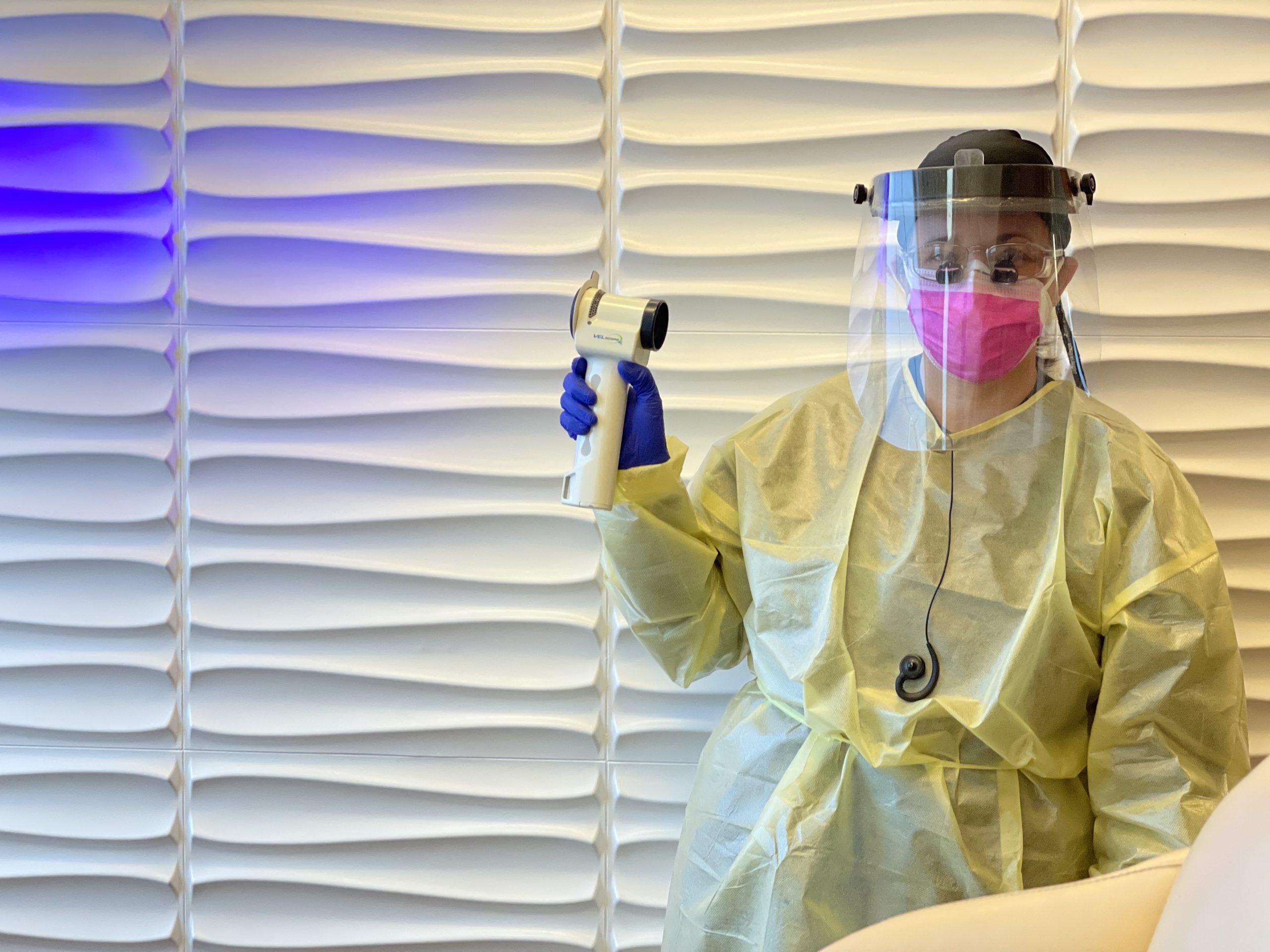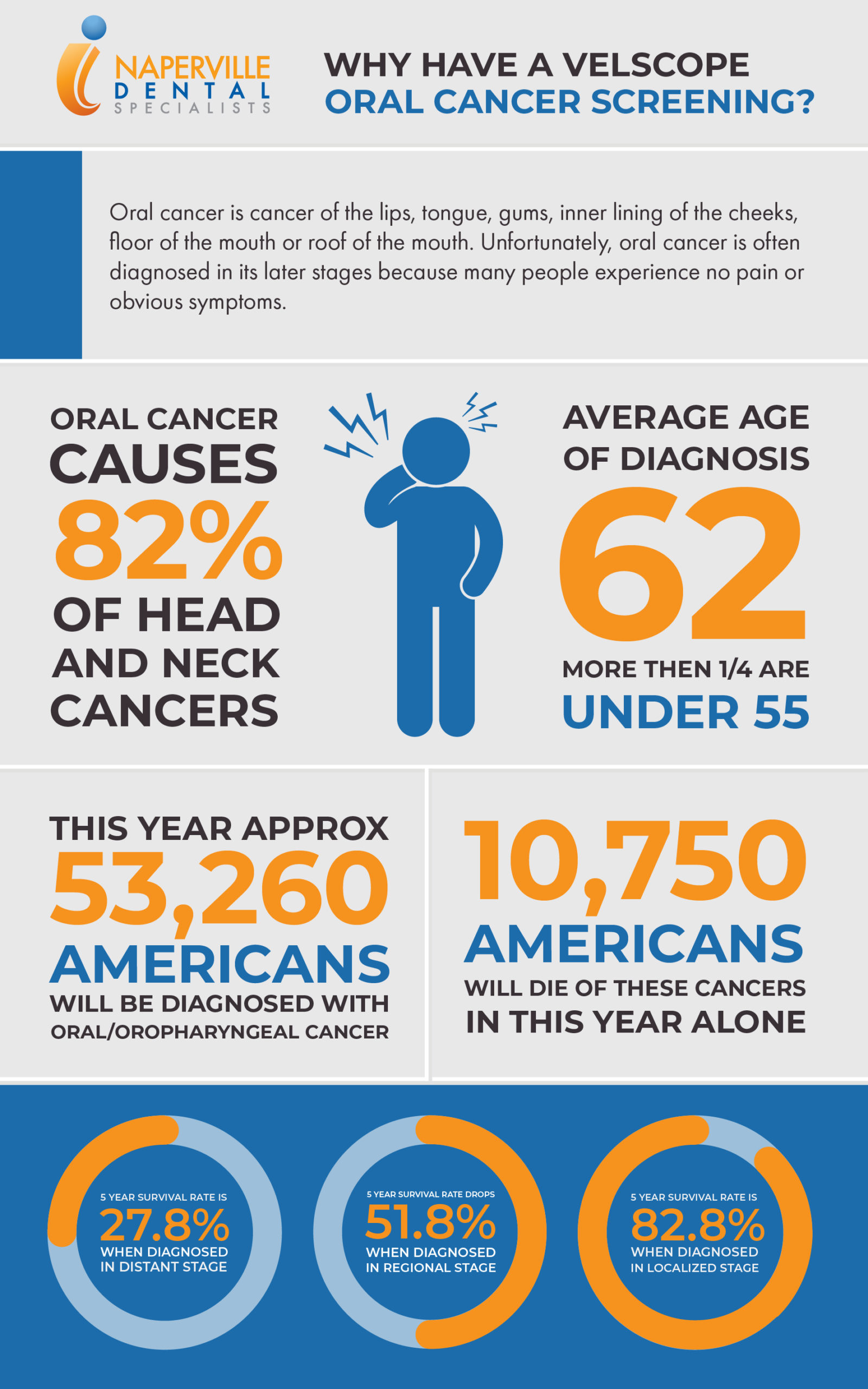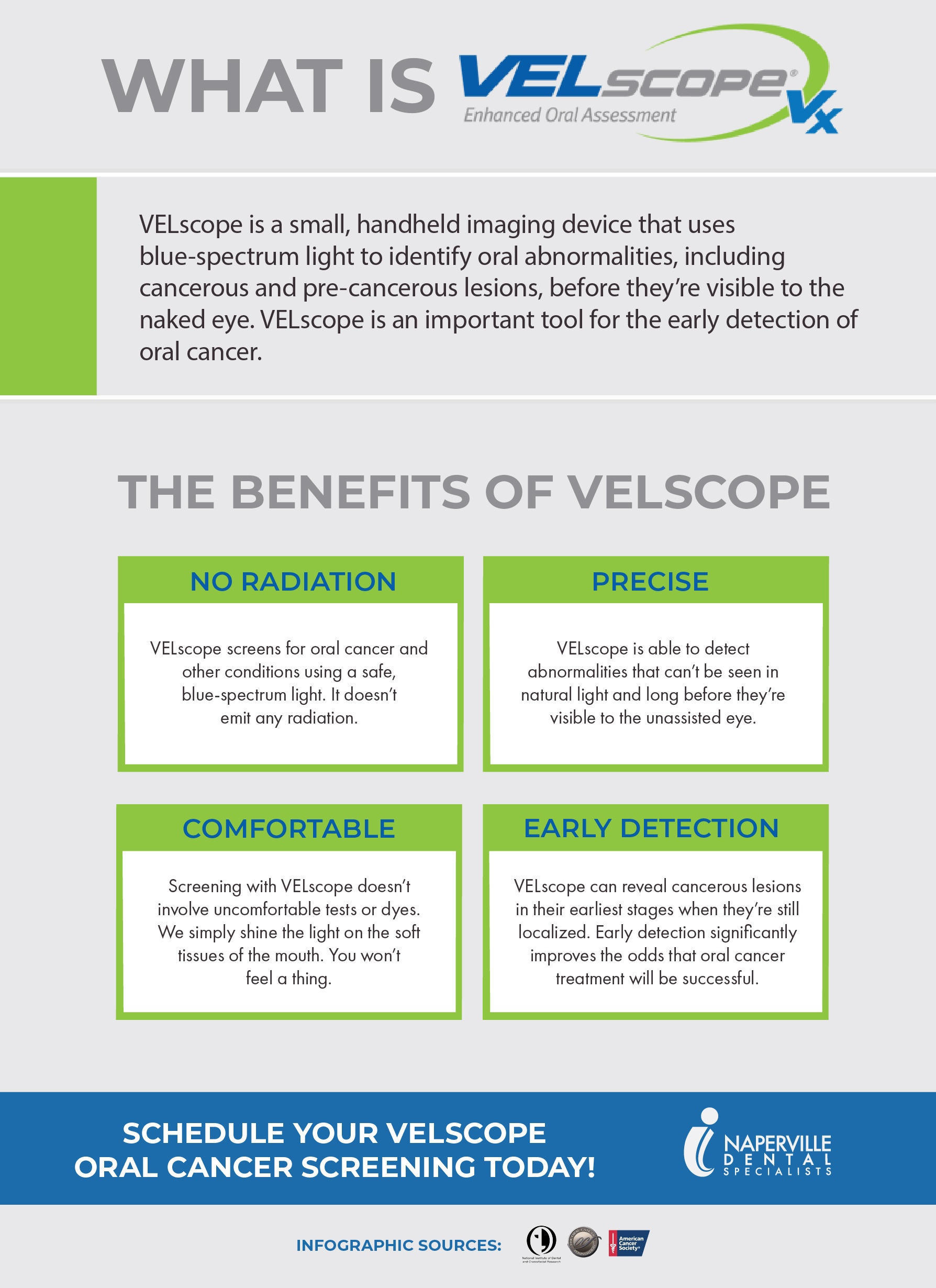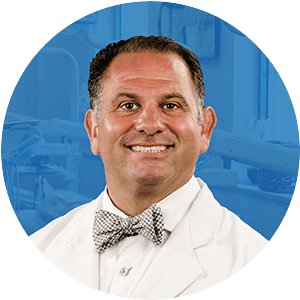
As most people probably read or saw in the news, sadly, Eddie Van Halen died at the age of 65 in early October. While Van Halen passed away from throat cancer, the iconic rocker’s long battle with cancer began with a diagnosis of mouth cancer in 2000, which led to him having a portion of his tongue removed. When our founder and Naperville prosthodontist Dr. Anthony LaVacca heard about Van Halen, he said to our team, “This is exactly why we do VELscope oral cancer screenings.” While VELscope is a powerful, life-saving technology, not all patients are aware of the benefits of VELscope and the role it plays in the early screening and detection of oral cancer and increasing the odds of survival.
What is Oral Cancer?
First, what is oral cancer? Oral cancer, also referred to as mouth cancer or oral cavity cancer, which is what Eddie Van Halen’s cancer began as, is cancer of the lips, tongue, gums, inner lining of the cheeks, or the floor or roof of the mouth. Oropharyngeal cancer is cancer of the oropharynx, or the part of the throat immediately behind the mouth. Oral cancer and oropharyngeal cancer, which are often grouped together when it comes to oral cancer stats, are part of a larger group of cancers called head and neck cancers. These cancers do not include brain cancer, which is its own category.
As with all types of cancer, oral cancer occurs when the cells in the mouth experience changes in their DNA. These changes cause the cells to keep growing and dividing instead of dying off like healthy cells would. These abnormal cells accumulate and can turn into a tumor, which can eventually spread in the mouth, to the other parts of the head or neck, or even other areas of the body. The majority of oral cancers are squamous cell carcinomas, meaning they start in the squamous cells that line the inside of the mouth and lips.
Oral cancer makes up 85% of all head and neck cancers. The Oral Cancer Foundation estimates that approximately 53,000 Americans will be diagnosed with oral or oropharyngeal cancer and only slightly more than half (57%) of those diagnosed will survive beyond five years. This number isn’t meant to scare you and oral cancer isn’t inherently more deadly or hard to treat than other cancers. In fact, the prognosis for oral cancer is very good when it’s caught early. While the exact survival rate of oral cancer depends on where the cancer is located (i.e., the tongue vs. the lips), overall, the five-year survival rate for oral cancer when it’s localized and in its earliest stages is 82.8%.
Unfortunately, the five-year survival rate drops to 51.8% when oral cancer is in the regional stage (has spread to nearby structures or lymph nodes) and 27.8% in the distant stage (has to spread to distant parts of the body). The staggering difference between these numbers really highlights the importance of early detection when it comes to oral cancer. The challenge is that there aren’t always any signs or symptoms and it’s commonly caught in its later stages.
What are the Causes and Signs of Oral Cancer?
While no one knows exactly what causes oral cancer, there are a number of risk factors, including:
- Being male – Men are twice as likely as women to develop mouth cancer
- Being over the age of 40 – While a large number of people with oral cancer are over the age of 40, the average age is getting younger because of the human papilloma virus (HPV)
- Using tobacco – Smoking cigarettes, cigars and pipes increased your risk about six fold, while using smokeless tobacco products like chewing tobacco can make you as much as 40 times more likely to develop cancer of lips, gums and cheeks.
- Heavy drinking
- Having a family history of cancer
- Sun exposure – Excessive sun exposure has been tied to lip cancer
- Not eating fruits and vegetables
- Having a weakened immune system
- Having the human papillomavirus (HPV) – Some strains of this common sexually transmitted disease, especially HPV16, increase the risk of developing mouth and throat cancer
As for the oral cancer signs and symptoms, many people don’t experience any symptoms at all, particularly in the early stages. However, oral cancer signs may include:
- A mouth or lip sore that doesn’t heal
- Loose teeth
- A reddish or white patch inside of the mouth
- A growth of bump inside of the mouth
- Difficulty swallowing or pain when swallowing
- Pain in the mouth, jaw or ear
If you have any of the above symptoms and they’re bothersome or they last for more than two weeks, it’s important to schedule a visit with your dentist or a doctor.
What is VELscope?
VELscope is a small, handheld imaging device that uses blue-spectrum light to reveal oral abnormalities before they can be seen by the naked eye. While VELscope is helpful for identifying things like chemical irritation, side effects from medication and infections, the most important abnormalities it can detect are cancerous and pre-cancerous lesions.
When we perform a VELscope oral cancer screening, a Naperville Dental Specialists team member simply shines the light on the soft tissues inside of your mouth. The device uses what’s known as natural tissue fluorescence, which means abnormal tissues will stand out from healthy tissues under the blue-spectrum light. A VELscope exam is completely non-invasive and doesn’t require any dyes. If we do spot a suspected pre-cancerous or cancerous lesion, a biopsy would be recommended to determine if the lesion is in fact oral cancer. If so, you would receive the appropriate treatment.
What are the Benefits of a VELscope Oral Cancer Screening?
There are a number of important benefits of a VELscope oral cancer screening, such as:
- It helps us detect oral cancer in its earliest stages, including identifying pre-cancerous lesions. When oral cancer is in the localized stage, treatment is much more likely to be successful and the survival rate is significantly higher.
- We can see suspicious areas long before they’re visible to the naked eye. While we always perform a visual inspection and look for signs of oral cancer at your regular dental exams, VELscope is able to pinpoint areas of concern much earlier.
- A VELscope exam is safe. The device uses blue-spectrum light and doesn’t emit any radiation.
- VELscope oral cancer screenings are quick and comfortable. We shine the light on the soft tissues of your mouth and you won’t feel a thing. There are no needles, no dyes, and no special rinses required.
- You’ll gain peace of mind. Even if we don’t spot anything, you’ll be able to breathe a sigh of relief knowing that there are no concerning lesions in your mouth. This is especially true if you have any of the risk factors of oral cancer.
So, is VELscope worth it? Absolutely. Oral cancer is highly treatable and the prognosis is good when it’s caught in its earliest stages. A VELscope oral cancer screening can save your life and given that the exam is non-invasive and painless, the trade-off is well worth the few minutes it will take. Eddie Van Halen’s death just goes to show that none of us are immune to cancer. When it comes to oral cancer, the best thing we can do is stay on top of our oral health with regular exams that include tools like VELscope, so that early detection is possible. To learn more or to schedule a VELscope oral cancer screening in Naperville, contact Naperville Dental Specialists today online or by calling us at 630-848-2010.


































